 |
 |
 |
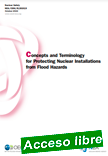 |
Concepts and Terminology for Protecting Nuclear Installations from Flood Hazards
NEA/CSNI/R(2020)9 ¦ English ¦ Nuclear Energy Agency/OECD ¦ October 2022 ¦ 39 pages
This report provides insights from a survey of Nuclear Energy Agency (NEA) member countries on the concepts used to establish effective measures to cope with external flooding hazards and on the terminology used to discuss preventing and mitigating the effects of external flooding hazards on the safety of nuclear installations.
|
.
|
 |
 |
Notification, Authorization, Inspection and Enforcement for the Safety and Security of Radiation Sources
Technical Reports Series No. 1002 ¦ STI/DOC/010/1002 ¦ English ¦ 236 pages ¦ Date published: 2022
This publication has been developed to assist IAEA Member States in establishing and maintaining regulatory control through notification, authorization, inspection and enforcement in relation to facilities and activities with radiation sources, in order to achieve the fundamental safety and security objectives. The publication addresses the implementation of the requirements for safety and security in a harmonized way, taking into account differences in the requirements as well as differences in States’ regulatory infrastructures.
|
For example, in some States the same regulatory body is responsible for the control of safety and security, while in others, safety and security are controlled by separate regulatory bodies. A harmonized approach for notification, authorization, inspection and enforcement is intended to improve the efficiency and effectiveness of regulatory control through concurrent inspection for safety and security.
|
 |
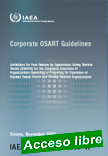 |
Guidelines for Peer Review by Operational Safety Review Teams (OSARTs) for the Corporate Functions of Organizations Operating or Preparing for Operation of Nuclear Power Plants and Closely Related Organizations
IAEA Services Series No. 47 ¦ English IAEA-SVS-47 ¦ 88 pages ¦ Date published: 2022
The Corporate OSART Guidelines provide overall information on how to conduct Corporate OSART missions for both the international review team and their counterparts in Member States to ensure the consistency and comprehensiveness of the peer review service.
|
.
|
 |
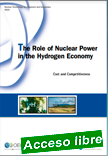 |
The Role of Nuclear Power in the Hydrogen Economy: Cost and Competitiveness
NEA No. 7630 ¦ English ¦ Nuclear Energy Agency/OECD¦ 2022 ¦ 92 pages
Hydrogen is expected to play important roles in decarbonised energy systems, as an energy source for otherwise hard-to-electrify sectors as well as a storage vector to enhance power system flexibility. However, hydrogen is not a primary energy resource and has to be produced using different chemical processes.
|
Water electrolysis, which uses electricity to split water molecules to extract hydrogen, is expected to become a leading solution in this context. Electrolysis will, however, only be a feasible solution if the electricity used as feedstock comes from low-carbon sources. A significant number of countries are therefore considering a role for nuclear energy in their hydrogen strategies. This report provides an assessment of the costs and competitiveness of nuclear-produced hydrogen across the hydrogen value chain and explores the impacts of hydrogen production on the overall costs of integrated electricity and energy systems. It shows, in particular, that nuclear energy can be a competitive source to produce and deliver low-carbon hydrogen for centralised industrial demand. The large scale and dispatchability of nuclear power can also improve the cost-efficiency of hydrogen transport and storage infrastructures, and reduce the overall costs of the energy system.
|
 |
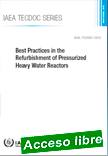 |
Best Practices in the Refurbishment of Pressurized Heavy Water Reactors
IAEA-TECDOC-2015 ¦ English ¦ 62 pages ¦ Date published: 2022
Continued and increasing demand for safe, clean, reliable, and cost-effective electricity generation is a strong driver to extend the operating lives of nuclear power plants (NPPs). The life of an NPP can be extended for several decades through refurbishment, which involves modernizing and enhancing major equipment and systems to support long term operation.
|
Refurbishing a facility through component upgrades and modifications also provides opportunities to enhance plant safety and reliability. This publication presents some highlights of past and ongoing pressurized heavy water reactor (PHWR) refurbishment projects. It summarizes the lessons learned and knowledge gained. It is intended to be of use to operators and other stakeholders embarking upon a PHWR facility refurbishment project.
|
 |
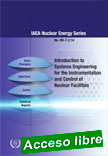 |
Introduction to Systems Engineering for the Instrumentation and Control of Nuclear Facilities
IAEA Nuclear Energy Series No. NR-T-2.14 ¦ English ¦ STI/PUB/2018 ¦ 80 pages ¦ Date published: 2022
This publication serves as a high-level introduction to systems engineering for instrumentation and control at nuclear facilities. Systems engineering is a holistic, interdisciplinary and cooperative approach to the engineering of large and complex systems. Many industrial sectors consider the approach as a necessary means to develop and utilize current and fit-for-purpose systems.
|
This publication is intended to assist Member States in understanding the philosophy and methodologies of systems engineering as presented by the ISO/IEC/IEEE 15288 standard, and provide guiding principles for the application of systems engineering to nuclear facilities and their instrumentation and control. Where necessary, it provides relevant referrals to other publications for detailed practical aspects.
|
 |
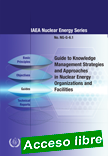 |
Guide to Knowledge Management Strategies and Approaches in Nuclear Energy Organizations and Facilities
IAEA Nuclear Energy Series No. NG-G-6.1 ¦ English ¦ STI/PUB/1957 ¦ 67 pages ¦ Date published: 202
Nuclear professionals gain knowledge, experience and skills over the years while working at their organizations. Some of these are strategically important for continuous business performance. The success of a strategic knowledge management programme depends on the ability to convert individuals’ knowledge, experience and skills into organizational assets.
|
This publication, based on IAEA expert missions and assistance visits since 2004, provides guidance on developing and implementing a strategic knowledge management programme as a proactive measure, to reduce the risk of knowledge loss and provide both safety and financial benefits. It is aimed at leaders and decision makers in both industry, academia and government, senior and middle level managers, and knowledge management specialists in nuclear organizations.
|
 |
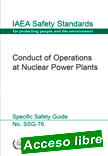 |
Conduct of Operations at Nuclear Power Plants
IAEA Safety Standards Series No. SSG-76 ¦ Specific Safety Guides ¦ English STI/PUB/2032 ¦ 66 pages ¦ Date published: 2022
Aimed primarily at operating organizations of nuclear power plants (NPPs) and regulatory bodies, this Safety Guide provides specific recommendations to ensure that operations in NPPs are conducted in a safe, effective, thorough and professional manner. It identifies the main responsibilities and operating practices in relation to such safe operation.
|
The structure of the operations department, which is the part of the operating organization responsible for the conduct of operations of an NPP is addressed. Also addressed are the setting of high standards of performance and making safety related decisions in an effective manner, conducting control room activities in a thorough and professional manner and maintaining a nuclear power plant within the established operational limits and conditions.
|
 |
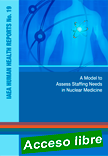 |
A Model to Assess Staffing Needs in Nuclear Medicine
IAEA Human Health Reports No. 19 ¦ English ¦ STI/PUB/1965¦ 17 pages ¦ Date published: 2022
This publication complements an online tool available on the IAEA Human Health Campus website and the IAEA’s International Research Integration System (IRIS). Together they address and calculate staffing requirements for the optimal and safe delivery of nuclear medicine services, based on current standards of practice and relevant IAEA guidance. Users can assess their current performance as well as additional staffing needs depending on their case-mix
|
— the type or mix of studies or treatments performed by their nuclear medicine department — or when acquiring new technologies. This publication and the online tool are intended for hospital administrators, department heads and all nuclear medicine practitioners to support the planning of new departments, introduction of new technologies and periodic reviews of resources.
|
 |
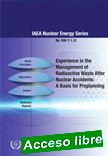 |
Experience in the Management of Radioactive Waste After Nuclear Accidents: A Basis for Preplanning
IAEA Nuclear Energy Series No. NW-T-1.31 ¦ English ¦ STI/PUB/2022 ¦ 179 pages ¦ Date published: 2022
Major accidents at a nuclear power plant or fuel cycle facility are rare but can produce large quantities of radioactive waste with widely varying characteristics that can be difficult to manage. Large volumes of radioactive waste can also be generated by accidents at military installations or by the mishandling high-activity-sealed radiation sources.
|
In the case of a major accident, radioactive waste volumes may quickly overwhelm existing national management and disposal infrastructure. Appropriate disposal facilities might not be available to match the amounts or characteristics of the wastes. This publication is developed to support Member States efforts towards improved preparedness related to the management of radioactive waste in the event of a nuclear or radiological accident. It builds on experiences gained following historic accidents to develop lessons learned, which planners in governmental agencies and nuclear facilities are encouraged to consider in preplanning activities.
|
 |
| |
|
|

|
|
|
| |
|
|
| |
| |
|
|
| |
| |
|
|
| |
| |
|
|
|
| |
| |
